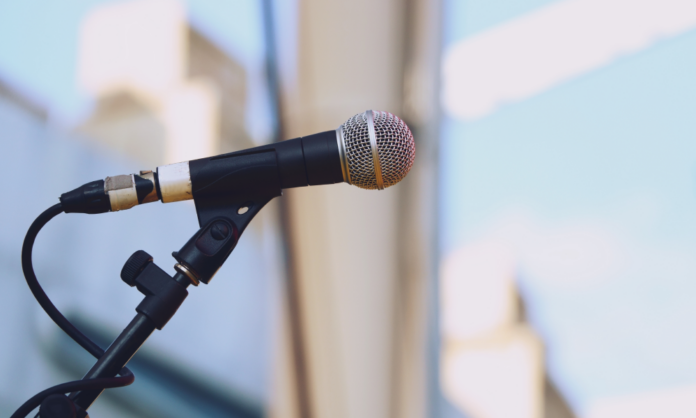Table of Contents
Ever noticed that tiny light that stays on even after you’ve turned off your television?
That light indicates that your TV is still drawing power in standby mode — a concept often known as vampire power.
Nearly all new electronic devices and home appliances continue to draw a small amount of power — even when you think they’re turned off.
‘Phantom load’ and “leaking electricity” are just two of the many terms used to describe this hidden energy vampire.
But there’s another phantom in the world of electronics world that’s completely different: phantom power.
So, what exactly is phantom power, and why do we need it?
Read on to find out!
So, What Is Phantom Power, and What Is It Used For?
Phantom power is primarily used in audio applications — particularly condenser microphones — which require a low level of DC electricity (typically 48V) to be sent along the same cable as an audio signal.
Condenser mics require powered internal components and circuitry — including a capacitor capsule.
Without a charge, the capacitor capsule can’t generate an audio signal.
(Source: Wikimedia Commons)
Most condenser mics used in audio performance and recording rely on a balanced connection delivered by an XLR or TRS cable — essential for transmitting audio signal and phantom power.
Condenser microphones are also used almost exclusively in devices that transmit or record audio, including:
- Smartphones
- Laptops and tablets
- Webcams
- Voice-activated smart devices
- Smart assistants like Amazon Echo (Alexa), Google Nest Audio, and Apple HomePod
- Earphones with built-in microphones
- Camcorders
- Hearing aids
All of the above devices and many others use electret condenser mics to receive, transmit, and record human voices and other audio signals.
Unlike other condenser microphones, electret condensers use a permanently charged material (the electret) that doesn’t require an external power supply.
A battery or the device it’s built into supplies the tiny amount of voltage required to operate an electret condenser’s internal circuitry.
Electret condenser mics offer numerous advantages over other types of microphones — particularly in applications where size matters.
- Size: Extremely small. Ideal for integration into portable devices.
- Cost: Inexpensive. Essential for mass-produced products.
- Power: Extremely low power consumption. Minimal drain on the battery life of devices.
- Performance: Decent sensitivity for their size. Provides adequate audio capture for many applications.
- Durability: Robust and reliable. Ensures longevity in demanding environments.
The benefits of condenser mics are enabled by electret materials and/or external phantom power.
Are Phantom Load and Phantom Power the Same?
No. Phantom load and phantom power refer to two unrelated phenomena in modern electronics.
Phantom power is primarily used to power components and circuitry in condenser microphones used in professional audio applications, though not as frequently in portable devices.
Electret condenser microphones operate on the same basic principles as mics that use phantom power.
However, they function using a permanently charged electret material that doesn’t require an external power source, making them ideal for portable devices that capture audio.
Phantom load refers to the vampire energy many electronic devices and appliances consume when “switched off” but still drawing electricity for standby power.
A number of terms have become popular to describe electricity consumption from standby power, including:
- Phantom Load
- Leaking Electricity
- Vampire Power
- Idle Power
- Off-Mode Power
- Wall Wart Power
- Energy Vampires
- No-Load Power Consumption
- Quiescent Power

Does Phantom Load Cause Higher Electricity Bills?
Yes. The electricity draw of most products in standby mode is minimal (<0.5W), but the combined phantom load of all devices and appliances drawing standby power in the average household is substantial — between 5% and 10% of total consumption.
Berkely Lab estimates that the “billions of products continuously drawing standby power are responsible for about 1% of global carbon emissions.”
Standby power provides supplementary benefits for many electronics, including convenience and improved functionality, but a significant amount of energy is lost to poor design and unnecessary consumption.
With the growing ubiquity of Internet of Things (IoT) and smart devices, standby consumption will likely increase in most homes for the foreseeable future.

6 Ways to Cut Back on Standby Power
While it’s certainly possible, completely eliminating phantom load consumption from standby power at home is unlikely to be worth the effort.
There are much more effective ways to save on electricity bills.
For example, installing a solar generator can help you reduce electricity consumption by 75% or more.
Still, there are some simple steps you can take to limit phantom load at home.
- Unplug Your Devices: Many devices and appliances consume electricity when not in use. Do you really need that LED clock on your microwave, coffee maker, and other small appliances? If you know what time it is, unplug appliances that don’t require continuous power. “Switched-off” devices that still emit light or feel warm to the touch still consume electricity.
- Use Power Strips: Plugging groups of related devices into a single power strip makes it easy to turn off multiple electronics simultaneously. For example, plug your home entertainment system into a surge protective power strip and turn it off before bed. You’ll protect your sensitive electronics and save power.
Here are just some of the home entertainment devices that are also energy vampires when turned off but left plugged in.
- Televisions
- Cable boxes
- Satellite receivers
- Game consoles
- Streaming devices (Fire Stick/Apple TV/Roku etc.)
- Home theatre/5.1 sound systems
- Soundbars
- DVD/BluRay players
- Opt for Energy Star Appliances: Energy Star rated appliances meet strict energy efficiency standards, including lower standby power draw where applicable.
- Upgrade Old Appliances: The standby power draw of current devices is significantly lower than it was 20 years ago — typically between 50% and 90%. And you’ll save even more electricity from energy efficiency when upgraded appliances are used.
- Unplug Your Chargers: The AC-to-DC chargers that recharge your personal electronic devices — such as smartphones and laptops — continue to draw power even once the battery is fully charged. Phone and other AC-to-DC chargers are nicknamed wall-warts for a reason! By unplugging your chargers and devices once they’re fully recharged, you’ll save electricity and help maintain battery health.
- Shut Down Computers and Gaming Consoles: Computers, gaming consoles, and other devices in sleep mode still consume power. The average desktop PC consumes over 80% more electricity in sleep mode than when it’s shut down. No definitive evidence exists that shutting modern computer hardware down is detrimental to longevity and performance compared to letting it sleep.

Frequently Asked Questions
Yes. Most modern electronic devices and home appliances continue to consume a small amount of standby power—AKA phantom load—as long as they’re plugged into an outlet. Most devices draw just a few watts, but given the number of electronics in most homes, it adds up to multiple kilowatt-hours over time. Approximately 5-10% of the average electricity bill is due to standby power consumption. Use power strips to shut down numerous electronics simultaneously and unplug unused chargers.
Yes. Standby power, also known as vampire power and phantom load, is responsible for 5% to 10% of electricity consumption in the average US household. You can drive a stake through vampire power consumption by using power strips to shut down multiple devices when not in use, unplugging small appliances, and disconnecting chargers when batteries are full.
Phantom power is essential for the function of condenser microphones used in professional audio applications. Signal and power (48V) are transmitted on a single circuit in a balanced XLR cable to enable the capacitor capsule and internal circuitry to function. Electret condenser mics are used in most personal electronic devices that transmit or record audio, including phones, webcams, and smart devices. The electret is permanently charged and doesn’t require external phantom power.
Final Thoughts
Whether you’re hunting for energy vampires or looking to understand why phantom power is essential for specific audio applications, hopefully, you now understand the differences between phantom load vs. phantom power.
Minimizing the negative impacts of phantom load from standby power is a worthwhile endeavor that can help you save on electricity bills.
However, investing in a solar generator like EcoFlow DELTA Pro 3 offers much more significant savings potential.
EcoFlow offers a wide variety of solar generators and portable power stations that provide energy security and help slash your electricity bills.
Check out our selection today.
